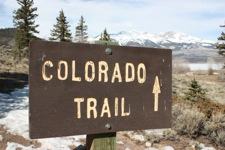In certain popular camping and hiking destinations, the local terrain can pose a challenge to outdoor enthusiasts. Whether it be a steep grade, a narrow ridge, or a snaking creek bed, learning to identify and pursue the easiest route through tough areas will make you a better overall outdoor adventurer. This skill set comes in handy especially for hunters and fishermen, who often must make their way through tough paths to find the perfect stakeout spot or honey hole. Use the following tips to learn how to improve your own navigation skills.
Steep grades

Of course, being in decent shape is a prerequisite for making your way up a steep grade. Impossible angles like those you’ll find in the valleys of the Appalachians, Rockies, or Ozarks require quite a bit of leg and upper body strength to climb. Success, however, is as much mental as it is physical. Before making your way up the terrain, carefully determine the path that seems easiest.
Generally, going at a steep grade at an angle is easier than making a straight line up. When you’ve started climbing, look for hand holds along the way. Sturdy roots and large rocks embedded deeply in the soil are both suitable. As you push with your legs, simultaneously make the effort to pull with your arms whenever possible. If you happen to slip on the way up, make every effort to get on your butt, and dig in your heels gradually slow yourself down. This should prevent you from experiencing a dreaded rolling collision.
Ridges
Exceedingly narrow ridges may be the most dangerous navigable type of terrain out there. When attempting to tackle one of these, use your discretion. Oftentimes, the spot you’re trying to get to simply isn’t worth the risk of slipping. Only proceed if you’re confident that you can navigate the ridge safely. Luckily, nature provides plenty of balancing aids in most areas. Reach out with your hands, and use any tree trunks to stabilize yourself if you walk. Take slow, careful steps, increasing the weight you put on the ground gradually with each one. Though it might seem tedious to travel so slowly, it is the only surefire way to test whether the step is stable.
Creek Beds
The two biggest things to watch out for in this type of terrain are pitfalls and slippery surfaces. Though a fall isn’t as immediately dangerous here as on a steep grade or ridge, it can still be more than a minor annoyance – especially in cold weather. Like the other two types of navigation, balance and slow steps are of utmost importance. Try to move from large rock to large rock, as they tend to be embedded more sturdily, and get slick less often.
Additionally, traveling along them is quieter than trudging through gravel. Oh, and if you own or use land with a creek bed as a major terrain feature, consider investing in some waterproof boots.
The most important thing to remember about navigating tough terrain is to use your best judgment before setting out. If the path looks unrealistic, then simply take the longer route. The motto “better safe than sorry” applies just as much to the outdoors as it does anywhere else.


“better safe than sorry” is exactly right. backpapers need to be prepared. I am a hiker myself. If you need some first aid supplies, please visit http://www.txsafetysupply.com and enter “5109” on the coupon code for an additional 10% discount on first aid supplies. Be prepared.